In a less strict way we can define the side continuity, from the left and from the right.
A function is continuous in the point

Let's see a few examples to better understand the concept:
Example
Let's take the function
Side continuity from the right:
Side continuity from the left:
We observe that the functions that are continuous in a point, are continuous for right and for left, or said the other way round, that when the side continuity coincides for the right and for the left, we say that the function is continuous in the point.
